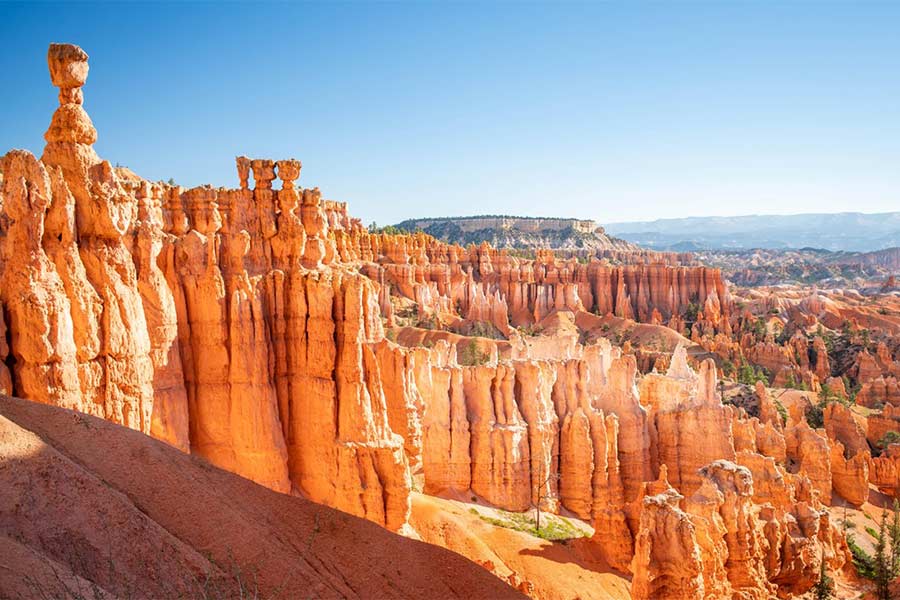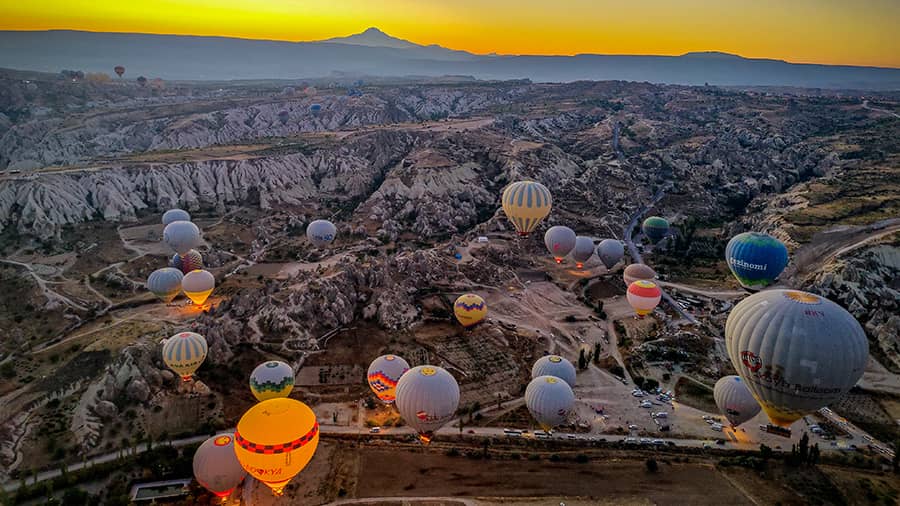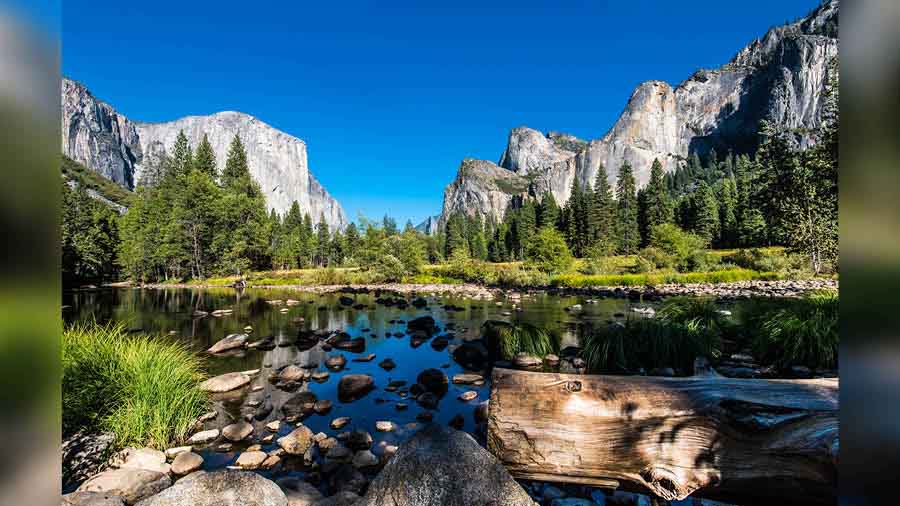They will tell you that you don’t need more than a few hours to visit one of the most spectacular natural sights near Las Vegas. I fell for that myth the first time I visited Bryce Canyon National Park in Utah. I had the audacity to pack in two national parks in Utah — Bryce and Zion, into one frenetic 16-hour day bus trip from Las Vegas. One of those trips where you are running from one photo stop to the other, ticking off boxes and depending on fellow solo travellers to snap Instagram worthy images for you. But visiting Bryce is more than an Instagram conquest, it’s about embracing the one thing that keeps bring me to the US — the great outdoors. I redeemed myself during my recent, second visit to Bryce even though some of my pictures confused some of my friends and followers on Instagram.
I swear I wasn’t in Cappadocia!
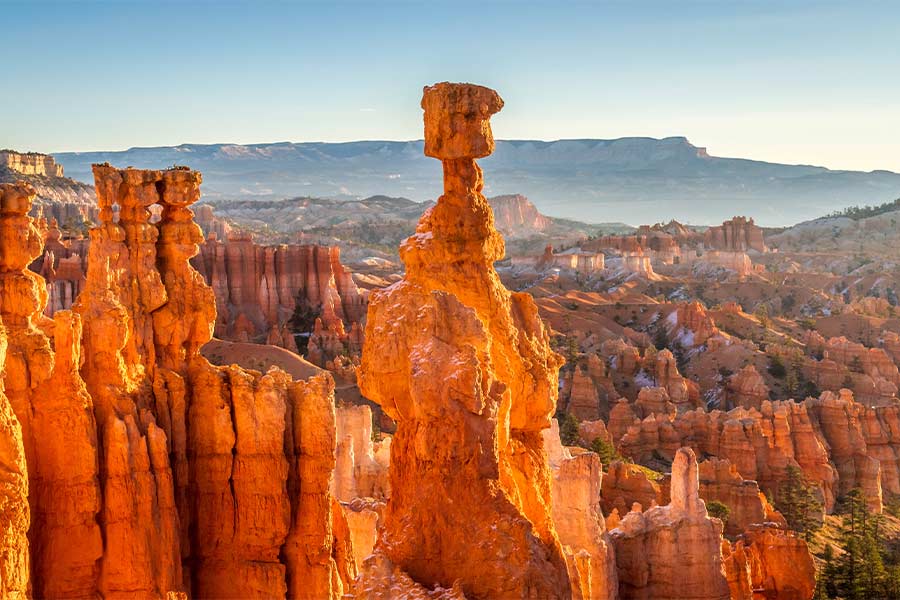
A hoodoo (a thin spire of rock) can range from the height of an average human to the size of a 15-storey building in the case of Bryce Shutterstock
‘Cappadocia vibes’ said one comment. It summed up the similarity between the stunning landscapes of Bryce and Cappadocia, one of the most popular destinations in Turkey. To understand this, you have to come to terms with a ‘hoodoo’. This is not the same hoodoo that refers to spiritual practises with roots in West Africa created by enslaved African Americans in the 19th century, but a thin spire of rock. It’s also been called a tent rock or a fairy chimney (used frequently in the case of Cappadocia). These hoodoos can range from the height of an average human to the size of a 15-storey building in the case of Bryce. It was these fascinating hoodoos that took me on a fascinating trail through one of the most stunning natural amphitheatres in the world.
The early bird catches the views

Start your Bryce experience early in the morning Ashwin Rajagopalan
The best way to start your Bryce experience is to get there early. Stay overnight around the park and arrive in time for a spectacular sunrise at the Park’s Sunrise Point. It’s also where one of the easier trails starts. That’s if you consider a two-hour trail with an elevation gain of 450 feet in sub-zero temperatures easy. Our guide tells us that the Bryce Amphitheatre is home to the largest concentration of hoodoos on planet Earth.
The Queen’s path
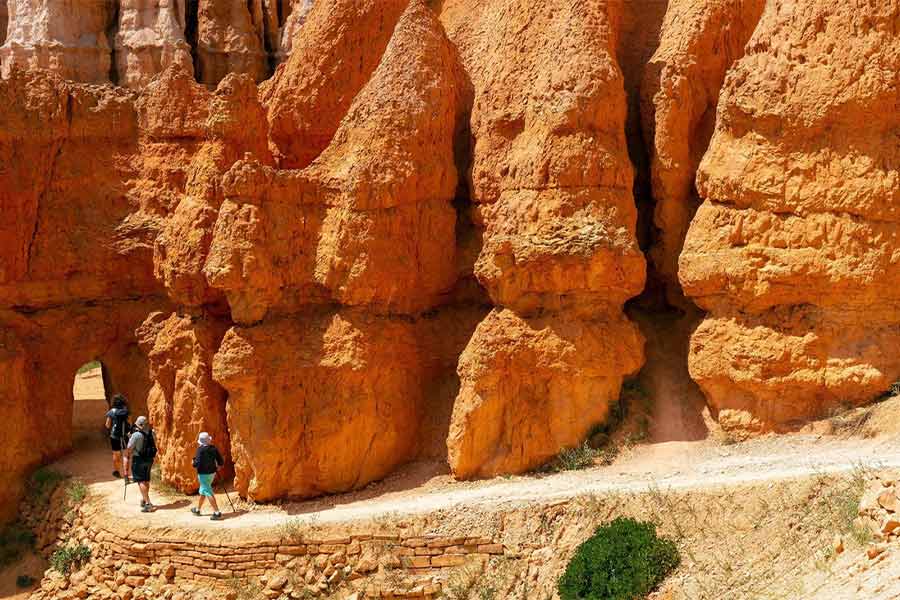
Part of the Queen’s Garden Trail National Parks Service
The 2.9-km Queen’s Garden Trail (round trip) descends from the rim and took us straight into the Bryce Canyon Amphitheatre. This is one of the best experiences in Bryce and can also be combined with the longer Navajo Loop that’s almost an extra 2km. The park also offers shared bicycle trails within the park. If you’ve been cheating on your gym routines, you can also opt for the 29km-long scenic drive. While the Bryce Amphitheatre area is found along its first 5km, the rest of the drive is also called the Southern Scenic Drive that offers nine scenic overlooks along the route. The drive also reveals the park’s changing elevations from just under 8,000 feet to over 9,000 feet.

A popular photo spot on the Queen’s Garden Trail Ashwin Rajagopalan
You’ll need about four hours to drive from Las Vegas to Bryce and about eight hours if you’re driving in from Los Angeles. The park was first settled by the Latter-Day Saints of Utah in the 1850s and takes its name from Ebenezer Bryce, who is credited with homesteading the area in the 1870s. It was designated a National Park by the US Congress in 1928. But the Bryce story began ages ago, when the hoodoo shapes were impacted by erosional patterns of alternating hard and softer rock layers. It’s the minerals that get deposited within the rock types over time that result in varying colours. These colours come to the fore at Sunset Point when the fading light accentuates creates a gorgeous colour palette.

Bryce amphitheatre at sunset Ashwin Rajagopalan
Kodachrome effect
The unique rock formations don’t end at Bryce. After a quick lunch at IDK Barbecue, a quintessential small-town all-American barbecue restaurant we were transported to another world of colourful spires, red rock mountains and bright blue skies that lives up to its name. Kodachrome Basin State Park is a jewel in Utah’s long list of outdoor attractions and our guide tells us that the park’s unique sandstone spires and columns called sand pipes cannot be found anywhere else on earth.

Kodachrome Basin State Park is a jewel in Utah’s long list of outdoor attractions Ashwin Rajagopalan
The park comprises of 67 sand pipes that rise as high as 50-plus metres. The park was featured in a 1940s issue of the National Geographic where they named this area Kodachrome Flat after a brand of Kodak film associated with vibrant colours. After a long day, we reached the summit along the Angel’s Palace Trail, the perfect spot to switch your mobile shooter to panorama mode. But that wasn’t the ‘high point’ of the day. We rushed back to Sunset Point at Bryce and watched a stunning display of colours that none of our cameras managed to capture. It was this moment that was worth coming back to Bryce for.
